
James Mangold has directed a little bit of everything — drama, romance, biopic, action, thriller, western – and now he’s attempting to bring all that experience to the superhero genre. On July 26 he’ll present The Wolverine, the big screen return of everyone’s favorite adamantium skeletoned mad man. Hugh Jackman is once again putting on the claws for a solo adventure that’ll take the character to Japan in search of a cure to his immortality.
After Iron Man 3 and Man of Steel, audiences might feel superheroed out this summer. However, watching the first 20 minutes of the film, it’s obvious The Wolverine isn’t anything like those massive films. Audiences have already seen the character in X-Men, X-Men United, X-Men: The Last Stand, X-Men Origins: Wolverine (and to some extent X-Men: First Class) but here Mangold is digging deeper with the character, telling a much more personal story.
I, along with reps from Latino Review, FirstShowing and ScreenRant, sat down with Mangold for a half hour to discuss the film. While the previous article had some highlights of that talk, what you’ll find below is the full transcript. In the discussion we talked about working around the constructs of the Frank Miller/Chris Claremont Wolverine story, the original movies, his trepidations about the project, how the superhero audience is changing, how Christopher Nolan’s approached influenced him, if he had to hand off to Days of Future Past, developing the bullet train sequence, marketing in the Internet age, meeting Mark Millar, the work of Darren Aronofsky and Christopher McQuarrie and more.
If you’re looking forward to The Wolverine, this interview is packed with insight and information. It’s a great long read.
You know that the last [Wolverine film] wasn’t well received. What was your approach, knowing that you had a damaged legacy to deal with?
James Mangold: I think for me there were a lot of opportunities in the movie. It was less about the fact that [the story of Wolverine] was a Japanese saga as well [instead] it allowed the chance to do the version you would like to see. I think this film, one of its advantages for me and I think a tougher thing for the first one; you’re unburdened by the origin story. I mean the origin story is awesome but it’s very hard [to pull off]. I’ll be very curious to see [how it’s handled in Superman]—a lot of friends [of mine] and smart people worked on [the new] Superman [I’ll be interesting to see how they pull it off]. The original Superman is like two movies; there’s a kind of Christ story to tell of how this immortal gets made and then they have an adventure. The advantage I have on [The Wolverine] is my two hours are entirely devoted to characters and adventure and not having to set everything up. There’s a joy to [setting up origin story], I’m not putting it down but I think that when you have a movie where you’re trying to do both it’s an extra challenge. For me, because so much has been set in place with this character already it afforded me a chance [to do something different] and I don’t think many films like these hero films go inside [the hero] and just explore him. The movie doesn’t revolve around any gigantic villain out to destroy the planet, the earth, the continent…a football stadium…the movie is built on interpersonal relationships. It sounds more obvious than you’d think, but there really aren’t many of these movies that are built on that.
It seems like you’re using the other movies or our perception of them to build on. You use Jean Grey there—
I think it would have been almost silly to try to make a movie with the same actor and essentially reboot by adding more of the existing characters. I wasn’t trying to do that. I was trying to free myself tonally. Script-wise working on the film, one of the things I tried to walk the line between was what I really loved about the original Claremont-Miller saga and what had already been set in place in the X-Men universe in the movies and in the comic books. In a sense not to flagrantly contradict what has come before but to just feel like as a piece of tone, as a piece of filmmaking, the movie can exist separately. It kind of exists in its own energy, in whatever I’m doing. I wasn’t just trying to pick up wherever someone else left off.
I was going to make mention of the Claremont storyline. You appear to have put your own spin to it — there isn’t that much to the storyline but you’re expanding on it in your own way.
Explain what you’re saying, are you saying there isn’t much of the original storyline?
There’s a lot more to expand on when it came to the original storyline, and it looks like you’re taking advantage of that.
One of the things I thought was really interesting when I came on the project is that it wasn’t entirely clear where this took place in the timeline of the movies and other things that existed. For me, the opportunity was to place this after everything that existed so that in a way I could take advantage of what I wanted to take advantage of without having to do a handoff to a preexisting movie or end in a certain place.
But also there were themes I wanted [to explore]. I knew Hugh [Jackman] a long time, I’ve watched these movies. I’ve been a comic book fan, both Marvel and DC, for my whole life. Particularly [in my] younger years. For me there were things I saw the opportunity to explore that were touched upon in the saga. But because, honestly, the comics are never-ending, you can explore these themes in a kind of expansive, horizontal way. In the end I have to somehow construct something that has a middle, beginning and end in a two hour period.
So you have that, and that offers you things that you have to deal with. In Miller’s storyline he’s got a preexisting relationship with Madripoor. Well, that would be really weird to just open a movie and he’s already been to Japan. In a way I had to do the origin story of his relationship with Japan. Like if there was something I had to introduce it was so that you’re not only falling into a new point in his own life, but you’re falling into a place where he’s already made a host of new connections and you don’t know how any of them came to pass. So there’s very simple redirection like that that we made.
My own feeling about putting it after everything, for me was a huge opportunity. Yet another idea that was less acutely explored in Claremont-Miller but I thought would fuse with it very well was this idea — when I saw the first script they had developed for it, the thing I wrote down was “everyone I love will die.” It was this idea to me of what it is to be immortal, and in a way Logan is cursed. So you have a sense that, in the storylines of the existing films, what served me was that everyone you love is gone. Everyone, your mentors are gone, your sense of belonging to any kind of fraternal organization whether you dismissed it or not was gone. People you loved are dead, either at your own hand or because of who you are or because of people who hate you. That’s a really charged emotional place to find a character especially one who is condemned to live forever. So that you kind of go that’s really interesting, what happens if you come upon a hero like this. A dark hero like this who has lost any real purpose for being and perhaps even lost some of his interest in trying to help mankind in anyway.
It seems like even in the scenes we just saw obviously that’s the theme — the immortality — that drives the plot a little bit.
Definitely, we haven’t made it a kind of secret. A) It’s always been an interesting story liability for Logan’s character, [though] not so much when you have a full X-Men movie because you have a lot of jeopardy with all the other characters. But if you have a guy who is impervious to almost any death except the most contractually complicated death you can imagine, the reality is that it removes the stakes for the picture.
But also there was a level of if you’re making a movie about a guy who lives forever, outlives everyone he ever loves and almost wishes he can get off that train, then you have a really loaded situation. You almost give him that [mortality] and now that is a problem. Meaning that he gets what he wanted and it isn’t what he wanted. That’s what’s ironic and interesting about the film is that it just asks a lot of questions about what it is to be a God in a way and whether we want it.
Because of the time period Mutants are mainstream, well-known entities. So these enemies are very aware in this case of Wolverine’s abilities.
Yeah we play it just straight. We play it as if it’s a known quantity in a way. He’s a little bit of an oddity in Japan, but I’m just trying to play it straight like we play it with different races and stripes now.
I know this is a story Mr. Jackman has been wanting to tell for a long time. Can you describe your relationship with him and how maybe both of you came to this project, and how the project evolved?
These kinds of movies are never something I thought about making, in the forefront of my own brain, and obviously there was another filmmaker working on this for a while. It’s been in development without any filmmaker for a while. But Hugh and I had a long-term friendship and have kept in touch with each other. Obviously we made a movie together over a decade ago. What happened to me was this kind of funny nexus of when the project fell apart with the people that were making it and it came upon my doorstep my first reaction was like, ‘No.’ But honestly because of all things that I came to realize when I spoke to Hugh… I hadn’t read Claremont-Miller since it had come out. So when I took a look at it, it dawned on me that the apprehensions I had about getting involved in a film, particularly one with preexisting characters, and what could be the burden of feeling like you’re making the 5th episode of a television show, I was freed from.
I saw a fresh start and I saw…maybe this in some way addresses your question without putting down other films but I saw the opportunity of unexplored avenues for this character. Miraculously, given how many times Hugh has done this role in movies, there are aspects of this character that have gone unexplored. I think that’s mostly a function of when you make an X-Men film it’s kind of a round robin. When you really get down to it there’s two hours and six or seven heroes and even if you give each one eight minutes you’re out of time. So the fact is that there’s this huge ability to focus in on one character and watch him exist, be, do things and not feel under this continuant pressure to keep having it have the to turn the plot around.
You mentioned Kate & Leopold. Hugh has become a much bigger star than he was then; he’s also played this role multiple times. Did you see that affect his performance? Is he just automatically on?
Well he has part of that, it’s clearly not the first time he’s put on claws or fought with claws but it does allow you to kind of ask more. It’s this kind of wonderful [thing]. You can reach deeper, you can look to refine things. There’s a level where you have a chance to redirect, to kind of redirect energies where they haven’t been before.
One of the great things about Hugh is that he’s not cynical, meaning that there’s no aspect where he started this project looking at it as a paycheck on a sequel movie. I think he views it as kind of a role of a lifetime, and I think that the character has such incredible depth. Even when I was saying about the losses he’s had to suffer, what he’s made of both a genetic accident and meeting up with mankind’s own kind of Frankenstein ambitions, it’s a huge amount of scars to carry and a huge task. It’s also really rewarding as an actor to play someone so interesting, not just a leotard. I think he is very ambitious about what he hoped to get out of this. The places he hoped to go that he hadn’t gotten the chance to hit.
Is there still an element of “human versus mutant” in this film,? Is there room for that?
You will see every combination. I mean I think that all the combinations of whatever you hope for are in the picture.
We haven’t seen much about the Viper character. Can you tell us anything about her?
The thing is… the reason that I hesitate is that I don’t want to give away the surprise, but more to that, the movie is a mystery. The movie itself is kind of a labyrinth. There are so many kinds of ways to tell a story. If you don’t just have a very clear bad guy who, as I said, has an agenda to destroy x, then your story operates more from ground level with Logan figuring out what’s going on. And so very much, whether you’re talking about Viper or Mariko or Yukio or Yashida or Shingen or Noburo, you’re trying to figure out where they all stand.
Everyone’s got secrets and everyone’s got surprises, not just Viper. The joy of the film to me is trying to figure out, like Logan is… You land in this Oz, you don’t really have your feet planted on the ground, you don’t know the way things operate here and you don’t know the language. So there’s a level where the interesting quality of the movie is watching him with us unpeel what the hell is going on.
And I’m sure he’s going to have one big epic fight with Silver Samurai.
I’m sure a lot of things will happen. [laughs]
From seeing the footage we’re getting a darker Wolverine. Superhero movies in general are starting to take a darker, more serious tone.
Well the audience, in a way, is the generation that grew up on these series of films. All of them, I just don’t mean ours, are getting older. The people who saw the first Iron Man, the kids who saw the first X-Men, in a way there is a natural… it makes sense to me. I feel like the bar, in a funny way, is being raised in unique ways on cable and other places where the sophistication of films is demanding that… I think the idea of just spending a whole lot of money on a whole lot of sound and images isn’t enough. I think that’s a really good thing, a really healthy thing for movies. It isn’t just that easy that you can just string two hours of anything loud and fast moving together and know you’re going to get your money back. I think that’s an opportunity for filmmakers because that means actually that you better be delivering something of actual story value.
You talked a little bit about how freeing it was coming up with this story. What challenges did you face, not having other characters to fall back on?
You’re naked. You just have to make it work. You have to make the movie work in terms of… I think of it as basically a western or a samurai picture or a noir picture. Having made all of them, they’re much more relatable in their architecture than… there’s a reason that Seven Samurai became Magnificent Seven so easily. The reality is that these forms are very related to one another. The dressing is radically different, but the way of the structure and the way that characters relate isn’t.
I felt more like I was making a western with Hugh Jackman without horses in Japan. From the moment you’re doing that, you’re adjusting to the fact that you’ve got to believe in the people on ground level. That’s the one thing that a western teaches you. The cliché that the tentpole action picture has that you don’t have in a western, noir or a samurai picture, is that you don’t have this crutch of being able to turn towards over-the-top action to hide the fact that you’re not actually telling any story at all.
For a western or a noir picture or a samurai picture to function, it actually needs a story about character. So that kind of reductive way of thinking about the movie, and then adding the large action as a kind of deserved bonus that you get now that you care about these people and predicaments is a slight different way to think about it.
Does Wolverine emerge from this permanently changed, physically or emotionally?
How could I possibly answer that question? [laughs] It’s my hope that every character that enters the film is in a different place by the end than they are at the beginning.
You talked about seeing this as a genre piece, but it ultimately still is a comic book movie. Do we see that all the way through, the comic book-ness of it?
I mean I don’t recognize these lines. If I had a record store I wouldn’t have country and rock, and where does this one go? I don’t know what “comic book movie” means. Does it mean Batman as it was on TV with Adam West, or do you mean Batman as done by Christopher Nolan? There’s a huge spectrum when you say that, and I don’t… why is The Outlaw Josey Wales not a comic book? Because he wasn’t a comic book? Why is Seven Samurai not a comic book? Because it wasn’t a comic book. Is it really that different?
Is there a story, is there a legend, is there how they came to be, are there secrets, are there special tools in their special belts? Yes. So I don’t actually recognize if they’re actually that different. To me, what’s dangerous is in the world of studios, calling something “comic book” has a danger of being a way of making it do anything. Meaning that it doesn’t have to make sense, it’s a comic book. I think the reality is that it does have to make sense and that the comic books did make sense.
Sometimes it’s too easy to take a brand and shovel a movie out where it doesn’t all add up, but people are going to show up anyways because it is a comic book and a brand. So the point is, my whole thing is “take it seriously.” Take it seriously like you were making a western or another kind of film of classic lineage, in less pulpy lineage. In a way that’s what I think Christopher Nolan and others have done, which is take it very, very seriously. I don’t think the first thing Chris thinks about in making those movies is a comic book. I think he thinks about the story.
Were you forced to ensure this lines up for Days of Future Past?
I’ve been allowed to do whatever I wanted to do with this. I’ve had an incredibly great ride on this movie and it’s been incredibly fun. I think one of the things we were very lucky about was that the story was so clear, and I came in with a very clear idea about what I wanted to do, which everyone here liked and then we did it. As you well know, because you’ve probably read the comic books it’s based upon, the reality is you don’t even end up that hog tied because of what’s coming later. Because it’s so clear that what’s coming later has to do with what happened earlier. It’s not like I’m handing off to a movie that just clearly steps off from where we stop.
Once the story moves to Japan, which we saw in the intro, the rest of the story…
Yes, 100% Japan from there. You saw the entire part of the picture that exists outside of Japan.
This movie is sort of its own one-shot, but it’s also the first movie to come out after Mark Millar began working with Fox’s heroes. Can you talk about Millar’s role and influence?
I’ve actually never met Mark. He’s been working on a script the whole time. One of the things that just showed from the studio’s point of view, I haven’t traded emails with him and talked to him with what I’m up to, but the reality is… I think what Mark’s doing and more so what people here are trying to do is just make everything line up in some way, but also at the same time to keep each filmmaker being able to tell a story that works. I honestly have felt, and maybe it’s the luck of this particular project or maybe it’s the way that things are going to operate now, but I feel that we’ve just done what we’ve felt like we should do and the studio has supported it. It’s honestly been a really lovely process.
Could you talk a little bit about shooting in Australia?
I loved it. It’s a great country. Sydney is an incredible city and I had one of the best crews I’ve ever worked with in my life there. I think that we brought a lot of them to Japan, but the experience was a great one. Not many people think about it, but Australia has such a unique position being this kind of destination of a lot of the biggest movies made in the last 20 years. If you kind of fold New Zealand, because they all kind of share a talent base of visual effects crews, it’s an incredible rich environment.
You consider that the Narnia films were made there, the last 3 Star Wars films, all of Peter Jackson’s movies, it’s an incredibly rich environment. You need special swords made, special claws made, some new device, someone is up to fabricate it. Some of the greatest designers, prop makers, artifact builders, and weapons people are all down there. They’ve done some of the most imaginative and fantastic work because of the kind of films that have landed there. In some ways it’s a tragedy for this country but so many of those movies have landed there that it dawns on you how talent-rich they are in servicing movies like this, and doing it with style.
Dave Leitch was the 2nd unit director, how much of the action did he bring to that and how did he get involved?
We almost shot the movie, actually, six months earlier [than we did]. You know Hugh ended up doing Les Mis; we couldn’t get in soon enough, and the seasons weren’t working with us where we wanted to shoot. But the fact is that Dave and I, we ended up spending six, seven months together working on the movie, planning action before we ever went, so it was kind of this wonderful ancillary reality to how long it took for us to finally get into production. I had all that time to prep. Usually with these movies, I think that’s one of the biggest liabilities for directors. Usually when they’re greenlit they have a date and the date is already the next summer so you’re always in a race. Our film existed where we had clearly passed any ability to be out last year so we kind of then gained 8 months or R&D, which Dave and I spent working together. Dave did a lot of work but I’m not someone who likes the idea of having multiple stages shooting or sending people off.
To me, these movies live and die by having a very strong sense of tone staying the same throughout the picture. And it was very important to me that the action, which is what Dave and I worked on more than anything, be believable. That it not be so CG- or wire driven that it feels like…obviously we wanted scale. And visual effects are going to play a role in that kind of scale. But there’s just a level where I don’t want Logan reaching up and pulling aircraft out of the air. I want it to exist in a more physical reality where he isn’t Spider-Man or Superman, he is a man – with a crazy strong skeleton and incredible strength and an ability to heal but he can’t leap over buildings in a single bound.
So we live within and push at the edges but live within the realm of that, modeling ourselves as much on movies like French Connection or Josey Wales or the Bourne films. We’re trying to pull things back to some place where his own darkness and intensity and physicality have more of a chance to shine, instead of every gag and every piece of action being so huge that it almost overwhelms. I want to see his character in the action. Even in that train sequence, it’s an effort to kind of make sure, even though the visuals are big, that you’re feeling connected to him and who he is and the moves he’s making and not just that your going on a kind of kaleidoscopic journey.
Can you talk about that train sequence? Did you look at other train sequences, such as in Mission: Impossible or Spider-Man 2?
I saw Mission way back when it came out and I don’t know if I’ve ever seen Spider-Man 2. But the reality for me was, after our first scouts, the idea of what going 270 mph might do. And you could take the trope that’s been around since Buster Keaton, of running around on the outside of a train. I mean they did it in the opening of the new Bond film too, last year. And then up the speed to this point that all these rules of physics start to change. That’s what started to interest me. Also if you spend time in Japan, the architecture is so intricate. The wires. It’s part of the artistry of how the cities are built. The amount of trestles and cables and the way they tie cables, it’s like a city of extension cords. And it occurred to me if you’re traveling 300 mph one of the biggest problems isn’t going to be the wind or the speed or any turns the train makes but just the shit that’s going to come by you that’s still. Suddenly you’re in this high speed game of limbo with overpasses, underpasses.
To me, most often the best action sequences are always, and again this gets back to westerns and the simplicity of them, a simple metaphor, a simple idea. Something that allows your characters to reveal more about themselves and their abilities in the face of one very interesting physical reality. And then not much more is needed. Sometimes people try too hard and there’s a lot to explore. You learn watching Cirque Du Soleil, they’ll just pull out one trampoline and do 150 incredible things with it. Movies too often to me pull out a trampoline, jump on it once, then pull something else out. To me the inventiveness is how much you can keep finding new petals, layers, underneath something and inverting the idea, then inverting the idea again.
How do you market a film when you want it to remain a mystery? The first trailer didn’t give away too much, but now we know about the train sequence. Do have a hand in that?
They do, they talk to you about it. They reality is they can’t possibly show…it’s very hard to show 3 minutes of the film cut up in any which way and not be giving away an awful lot. Particularly things have changed so much in the sense that now it exists online and people are making screen captures even if its an 18 frame cut. They’re analyzing what everyone’s wearing in the screen capture, so you have several levels where you’re not done. Your visual effects aren’t done, so the trickiest thing is making sure what’s getting out is also getting analyzed in a way where, it’s such a complicated thing. Everyone is going “Where is my teaser trailer?” and the second they get it they’re going “Well, that looks half baked.” So you’re always trying to balance how you can serve people’s hunger but also understand that they’ll always be hungry for more, until the movie actually comes out.
Was the Vine thing your idea?
No. In fact I was really skeptical about it. When Tony showed me what they were playing with and then we messed with it a little more and got to this kind of 6 second thing, I understood suddenly what I never understood. ‘Cause the way it would have been pitched to me was ‘Oh people’s attention spans have gotten so short,’ right? And it was like ‘Yeah, they’ve not gotten so short that they needed 6 seconds or less.’
But what I didn’t understand — and the second I saw it I completely understood — is the way you could share something that small. Almost like a living playing card, in an email or a tweet or anything. Just as a chunk of data it’s so small, it’s a pellet. It has a different kind of power. Which I think was more prevalent. I mean, we got incredible saturation with it, a lot of people saw it and part of that had to do with the newness of it and interest in the movie, obviously, but part of it is it is really convenient. It is really smart. And I don’t think it’s because people wouldn’t want to see something a minute and a half or three minutes long. Because then, god knows, why they would even bother coming to the movie? But the fact is it’s our currency now, these little nuggets and quotes and objects. But it was a great idea and a great name: Tweezer.
How much did you use from previous development efforts under Christopher McQuarrie and Darren Aronofsky? I know you said ‘This is my movie’ and put your stamp on it…
It doesn’t actually work that way. It’s not like I come in and piss on something. [All Laugh] I mean, these are smart people and they have good ideas and you’re kind of getting…I’m not taking offense, I’m just trying to say I have a lot of respect for both those guys. The reality is there’s always books and things friends have been working on, and we also all talk to each other. I can’t tell you on other projects how many great ideas I’ve gotten from a friend who isn’t even credited with anything on the movie but just gave me a tip or something that occurred to them watching it. So you’re always sharing and you’re always passing things off. I spoke to Darren before I came on. But it was more that I was just in. When I came on I was just trying to make it make sense for me. But certainly there’s work from Chris’s script, there’s his stuff in the movie. It’s not like we tossed stuff away. We just kept developing the movie.
The real thing was, I see my job and as I write myself… I mean I worked on the script as well. What you are always trying to do to set down just an idea. I try and evangelize, like I did with you guys… like the first 5 words I wrote on the script were “Everyone I love will die.” This is a movie about that. So now what do I do? How do I follow my journey through the Claremont/Miller saga and touch upon that? Are there other people wrestling with issues of immortality? Are there other characters who wish they were dead but are mortal? Wish they could live forever but are mortal? Or are immortal and want to live forever and don’t have the same abilities? How many permutations of this idea can I populate this story with, in which you suddenly get something really rich? To me, that’s the best of what comic book films have done, is to exist in a pulpy universe but at the same time deal with deep themes. I mean Shakespeare played to the groundlings he didn’t just play to the royals. So who knows what makes a comic book a comic book? You know what I mean.
The reality is just you just kind of sit down and its not so much I’m trying to get rid of someone’s work or enhance someone elses work, I go ‘How can we set sail toward this theme? What is on this theme? What is a different theme and therefore taking me in the wrong direction? What’s going to carry me this way?
The Wolverine opens July 26. Thanks to 20th Century Fox and James Mangold for their time.



.jpg)



.jpg)
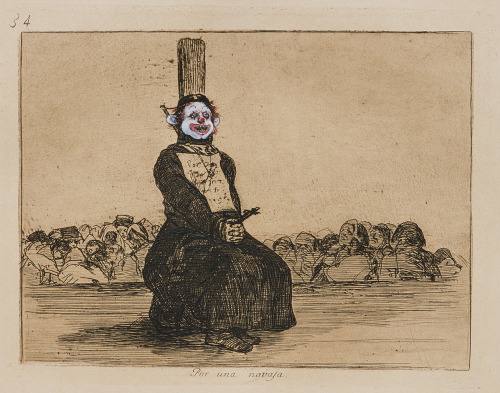
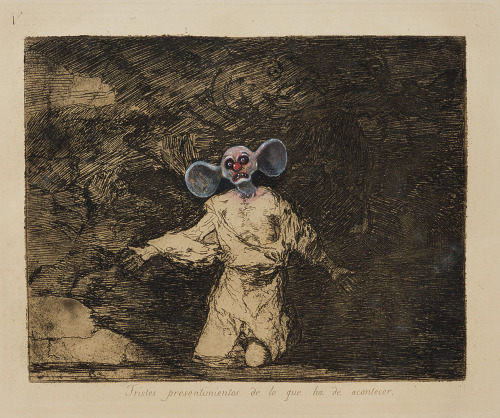
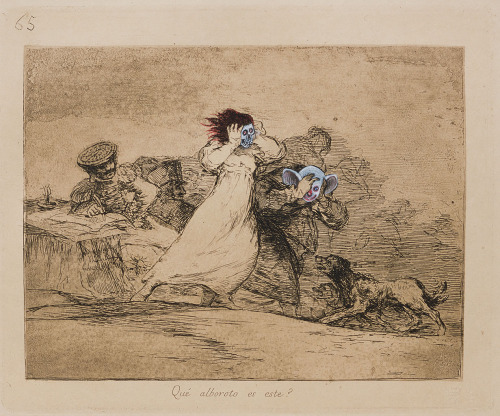
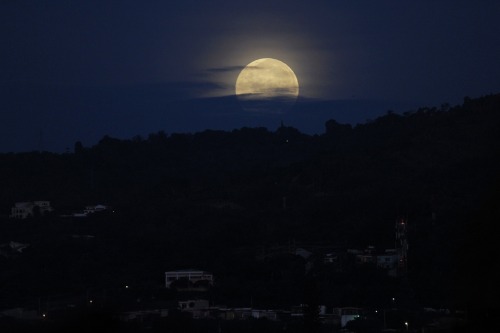


























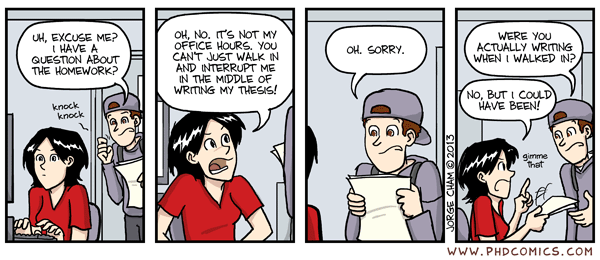


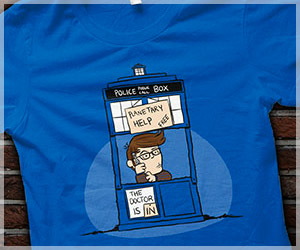
 Game of Thrones actor Nikolaj Coster-Waldau tells Wired that his character Jaime Lannister is "a very honorable man" (despite all the murdering and incest).
Game of Thrones actor Nikolaj Coster-Waldau tells Wired that his character Jaime Lannister is "a very honorable man" (despite all the murdering and incest).

